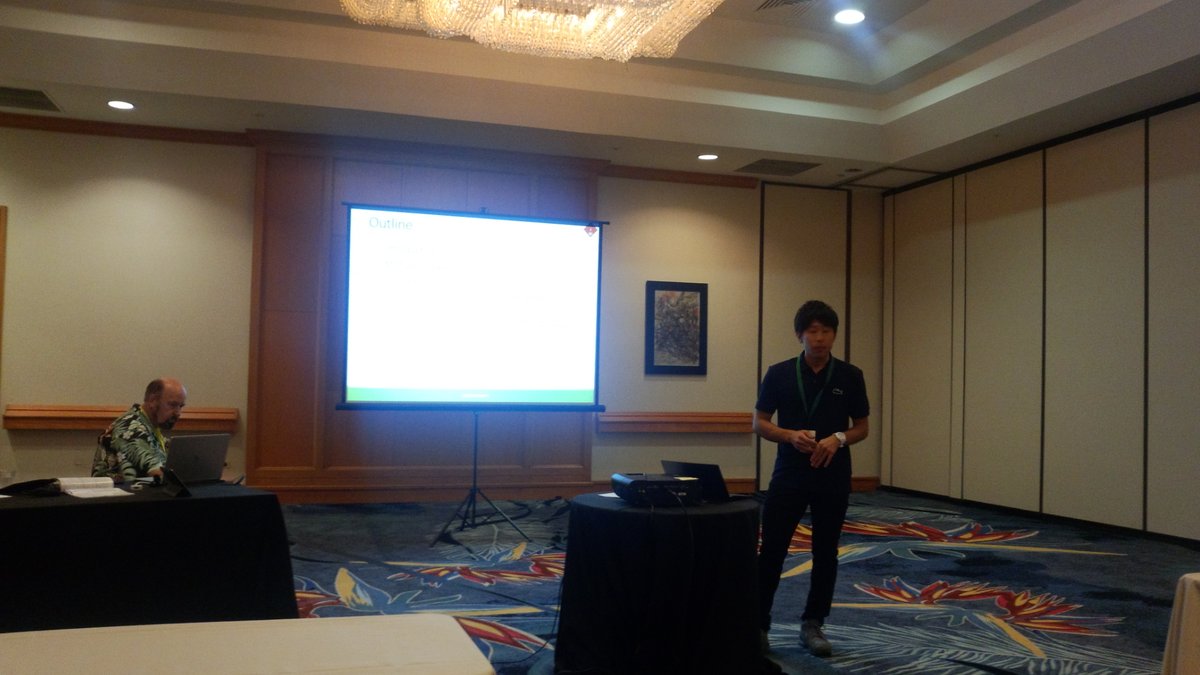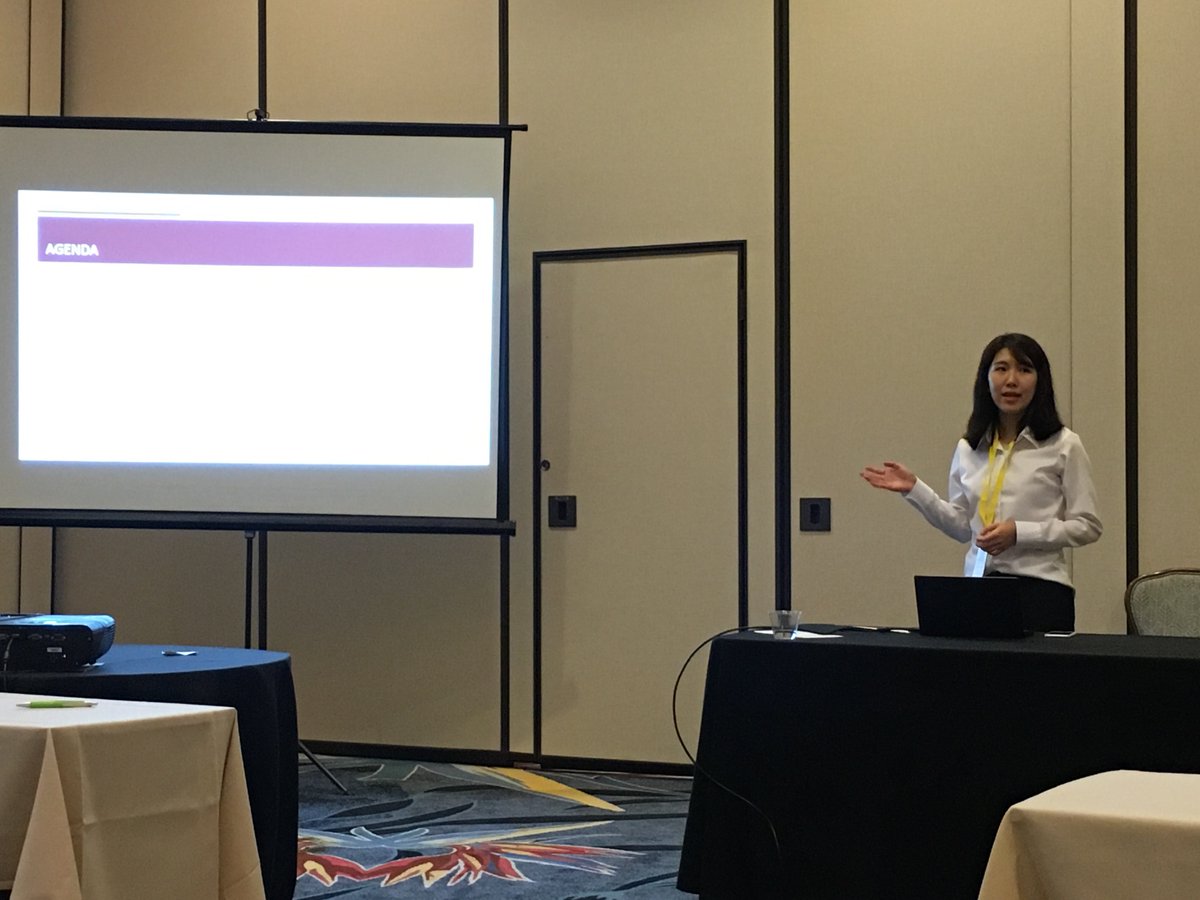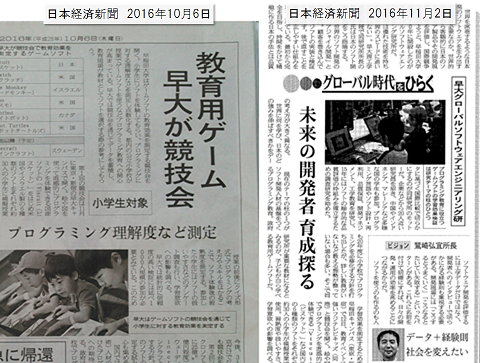- Chimaki Shimura, Hironori Washizaki, Takanobu Kobori, Yohei Aoki, Kiyoshi Honda, Yoshiaki Fukazawa, Katsutoshi Shintani and Takuto Nonomura, “Identifying Potential Problems and Risks in GQM+Strategies Models Using Metamodel and Design Principles,” 50th Annual Hawaii International Conference on System Sciences (HICSS-50), Waikoloa, Hawaii, Jan 4-7, 2017. (CORE Rank A)
- Juhua Li, Kazunori Sakamoto, Hironori Washizaki, Yoshiaki Fukazawa, “Promotion of Educational Effectiveness by Translation-based Programming Language Learning Using Java and Swift,” 50th Annual Hawaii International Conference on System Sciences (HICSS-50), Waikoloa, Hawaii, Jan 4-7, 2017. (CORE Rank A)
2017年の抱負
研究プロジェクト、研究業績、コミュニティ・プロフェッショナル貢献、チーム構成の観点から、以下に2016年を振り返り、2017年の抱負を述べます。
*研究プロジェクト*
2016: 我々は以下の3プロジェクトを成功裏に継続し、また2プロジェクトを新規に立ち上げました。加えて企業パートナーとの7以上の共同研究プロジェクトを継続しました。Fraunhofer IESE, Ecole Polytechnique de MontrealおよびFlorida Atlantic Universityを含む様々な海外パートナーとの研究連携を深めました。さらに、私は株式会社システム情報の社外取締役に就任し、同社との連携および共同研究を推進しました。
G7 Programming Learning Summit 2016- (フジテレビKIDS他との共同推進): プログラミング学習・教育環境の網羅的な定性定量調査研究
http://g7.washi.cs.waseda.ac.jp/
TraceANY 2016-2021 (科研費 基盤研究(B)): あらゆるソフトウェア成果物のあらゆる抽象度における追跡手法、およびそれを支えるプログラムメタモデルの分類 (ProMeTA: Program Metamodel TAxonomy)。
http://www.washi.cs.waseda.ac.jp/prometa/
CSPM: クラウドにおけるセキュリティおよびプライバシ知識のメタモデル 2015-2017 (IISF SSRフォーラム): クラウドコンピューティングにおけるセキュリティ&プライバシの知識を表現および構成するための共通メタモデルの構築。
http://www.washi.cs.waseda.ac.jp/?page_id=2728
ソフトウェア製品のSQuaREに基づく体系的な品質評価 2015-2017 (IPA/SEC RISE: ソフトウェア工学分野の先導的研究支援事業)
http://www.ipa.go.jp/sec/rise/#02-4
GQM-RG: ゴール指向の定性/定量測定・マネジメントの調査研究 2013-: GQM+Strategiesおよび関連手法の実践および応用研究。
https://gqmstrategies.wordpress.com/
2017: 我々は上述の5プロジェクトを継続および発展させます。7以上の企業パートナーとの共同研究を継続発展させます。加えて、IoT/組込みシステム工学と人工知能に関する新たなプロジェクトの立ち上げを予定しています。
*研究業績*
2016: 昨年我々は、SCIE、ESCIおよびDBLP収録の国際論文誌論文5編、国際会議発表・論文22編 (うちCORE Rank A会議2編、Rank B 6編、Rank C 4編)、国際会議ポスター6件、学会誌記事2編および招待講演13件の発表および提供機会を得ました。我々の活動は、10月6日および11月2日の日本経済新聞 朝刊記事を含む多くのメディアにおいて報道されました。さらに国際論文誌1編、国際会議3編(CORE Rank A 2編、Rank B 1編)、学会誌記事1編が採択済みであり2017年に掲載予定です。
昨年1月1日に目標として掲げた数字は論文誌7編 (国際論文誌3編以上を含む)、国際会議20編 (うちCORE Rank A会議2編以上、Rank B会議10編以上)でした。採択済みで2017年に刊行予定の論文を含めると、全体として目標を概ね達成したと自己評価します。無論、我々はこれに満足せず、常により良く、より多くの成果をあげていきます。
2017: 今年我々は、昨年からのビジョンを拡張したものとして「堅固な理論に基づくソフトウェア・システム開発プラクティスの実現」を掲げて、10以上の産業界・学術界パートナーと協調しながら、競争的資金を獲得しつつ研究を進めます。理論に裏打ちされた独創的かつアクショナブルなソフトウェア・システムズエンジニアリング手法・ツールにより、ソフトウェア・システムズエンジニアリングの産業界および学術界に貢献します。よりインパクトのある論文をより良い場所で発表します。具体的には、論文誌7編 (国際論文誌3編以上を含む)、国際会議20編 (うちCORE Rank A/A* 会議3編以上、Rank B会議10編以上)を目標とします。我々の研究成果の多くが手法、プラクティス、ツールといった形で、研究パートナーとの連携を通じて引き続き実際に用いられ実質的価値を生み出していくことを追求します。
*コミュニティ・プロフェッショナル貢献*
2016: 多くのご支援ご協力の元、次にあげる多くのプログラミング・エンジニアリングコンテストを開催あるいは開催に貢献してきました: ETロボコン2016東京地区大会、情報処理学会SamurAI Coding 2015-16および2016-2017。また我々は、次を含む多くの会議を開催あるいは開催に貢献してきました: AsianPLoP 2016、XP祭り2016、 Minecraft x Education 2016, PyCon JP 2016およびG7プログラミングラーニングサミット。さらに私は次にあげる多くの重要な役割により学協会や社会へと貢献しました: ISO/IEC/JTC1/SC7/WG20 Convenor、IEEE Computer Society Japan Chapter Chair、SEMAT Japan Chapter、IEEE ICST 2017 PC Co-ChairおよびIEEE CSEE&T 2017 PC Co-Chair。
2017: 今年我々は引き続き、プログラミングコンテストである情報処理学会SamurAI Coding 2016-17、IEEE ICST 2017およびIEEE CSEE&T 2017の開催と運営に貢献し続けます。また我々は、次を含む多くの会議を早稲田大学で開催することに貢献します: AsianPLoP 2017(3月12-13日)、IWESEP 2017(3月13日)、ICST 2017(3月13-17日)、ETロボコン2017東京地区大会(8-10月)、PyCon JP 2017(8-9月)。これらのイベントやコミュニティの開催や開催支援を通じて我々は研究成果を発信し、外部社会へと貢献するとともに繋がりを広げていきます。さらに私は引き続きISO/IEC/JTC1/SC7/WG20 Convenor、IEEE Computer Society Japan Chapter Vice ChairおよびSEMAT Japan Chapter Chairとして計算機科学全般およびソフトウェア・システムズエンジニアリング領域における研究・産業の発展、コミュニティ醸成および標準化をリードし貢献します。
*我々のチーム構成その他*
2016: 私は昨年4月に早稲田大学教授に昇任し、12月にAPSCITからComputer Research Contribution Awardを授与されました。また新たに中国、ミャンマー、ドイツから複数の国際学生が加わりました。
2017: 今年も引き続き様々な国々からの国際学生の参加を期待しています。多様な背景、文化、マインドセットを持つメンバが集うことで、我々のチームは創造性を含む様々な面でより強化され、上述の研究プロジェクトやプロフェッショナル貢献を強力に推し進めます。
鷲崎 弘宜
早稲田大学グローバルソフトウェアエンジニアリング研究所 所長・教授
国立情報学研究所 客員教授
株式会社システム情報 社外取締役
New Year’s Resolution 2017
In below, I review the last year’s resolution. Moreover, I describe New Year’s Resolution regarding Research Projects, Research Achievements, Community Contributions, and Team Organization.
*Research Projects*
2016: We successfully continued the following 3 projects and launched 2 projects in 2016. In addition, we continued 7+ industrial funded projects with industrial partners. We extended our international research connections incl. Fraunhofer IESE, Ecole Polytechnique de Montreal and Florida Atlantic University. In addition, I took up a post as outside director of SYSTEM INFORMATION CO.,LTD. to promote collaboration and joint research with the company.
G7 Programming Learning Summit 2016- (incorporation with FUJITELEVISION KIDS ENTERTAINMENT, INC. and other supporters): Comprehensive Quantitative and Qualitative Study on Programming Learning Environments.
http://g7.washi.cs.waseda.ac.jp/
TraceANY 2016-2021 (supported by JSPS KAKENHI: Grants-in-Aid for Scientific Research (B)): Tracing any software artifacts at any abstraction levels based on common metamodels including Program Metamodel TAxonomy (ProMeTA).
http://www.washi.cs.waseda.ac.jp/prometa/
CSPM: Cloud Security and Privacy knowledge Metamodel 2015-2017 (supported by IISF SSR Forum): Developing common metamodel for representing and organizing knowledge of security and privacy in cloud computing.
http://www.washi.cs.waseda.ac.jp/?page_id=2728
SQuaRE-based Comprehensive Quality Evaluation of Software Products 2015-2017 (supported by IPA/SEC RISE: Research Initiative on Advanced Software Engineering)
http://www.ipa.go.jp/sec/rise/#02-4
GQM-RG: Goal-oriented Qualitative/Quantitative Measurement and Management Research Group 2013-: Applied and extension researches on GQM+Strategies and related approaches.
https://gqmstrategies.wordpress.com/
2017: We will continue and expand all of the above-mentioned 5 projects in 2017. We will continue 7+ industrial funded projects with industrial partners. Moreover, we have a plan to initiate related projects in the area of IoT/embedded software/systems engineering and artificial intelligence.
*Research Achievements*
2016: We published and presented 5 international journal papers indexed in SCIE, ESCI and DBLP, 22 international conference and workshop papers (incl. 2 at CORE Rank A conferences, 6 at Rank B, and 4 at Rank C), 6 international conference posters, 2 magazine articles and 13 invited talks. Moreover, our research activities have been reported in the media including Nikkei News Paper on Oct 6 and Nov 2. In addition, 1 international journal paper indexed in SCIE, 3 international conference papers (incl. 2 at CORE Rank A and 1 at Rank B), 1 international conference poster and 1 magazine article have been already accepted to be published in 2017.
On 1st Jan 2016, I stated that we hoped to publish 7 journal papers (incl. 3+ international) and 20 international conference and workshop papers (2+ at CORE Rank A and 10+ at Rank B). By considering papers approved to be published in 2017, we almost successfully achieved the goal of number of papers stated. Of course, we believe we can do better and more in 2017.
2017: Having the similar but extended clear vision “establishing software and systems development practices based on solid engineering theory”, we will push forward with research on novel and actionable software and systems engineering methods and tools based on well-defined and validated theory to contribute to software and systems engineering industry and academia in collaboration with 10+ local and global partners. We aim to publish impactful papers at better places: at least 7 journal papers (incl. 3+ international) and 20 international conference papers (3+ at CORE Rank A/A* and 10+ at Rank B). Many of our research achievements in the form of methods, practices and tools shall be continuously used and produce actual values through our local and global partners.
*Community and Professional Contributions*
2016: Thanks to many collaborators and supporters, we contributed to several major programming and engineering contests: ET Robocon 2016 Tokyo Regional Contest, IPSJ SamurAI Coding 2015-16 and 2016-17. We organized and/or hosted many conferences and meetings including AsianPLoP 2016, XP-Matsuri 2016, Minecraft x Education 2016, PyCon JP 2016, and G7 PROGRAMMING LEARNING SUMMIT. Moreover, I played key roles in many societies including ISO/IEC/JTC1/SC7/WG20 Convenor, IEEE Computer Society Japan Chapter Chair, SEMAT Japan Chapter Chair, IEEE ICST 2017 PC Co-Chair and IEEE CSEE&T 2017 PC Co-Chair.
2017: We continue to contribute to IPSJ SamurAI Coding 2016-17, IEEE ICST 2017 and IEEE CSEE&T 2017. Moreover, we will host and/or organize various conferences and meetings including AsianPLoP 2017 on Mar 12-13, IWESEP 2017 on Mar 13, SIGSE meeting on Mar 12-13, ICST 2017 on Mar 13-17, ET Robocon 2017 Tokyo Regional Contest on Aug-Oct and PyCon JP 2017 on Aug-Sep. These event and community organizations give us good opportunities to publicize our research achievements and contribute to the outer world and expand our network. Moreover, I continue to serve as ISO/IEC/JTC1/SC7/WG20 Convenor, IEEE Computer Society Japan Chapter Vice Chair and SEMAT Japan Chapter Chair to lead the professional society and standardization in computer science and software/systems engineering.
*Team Organization*
2016: I was promoted to Professor of Waseda University on April 1st, and received Computer Research Contribution Award from APSCIT on December 24th. We had several new international students from China, Myanmar and Germany in 2016.
2017: Like last year, we expect some new students coming from several countries. Our team is growing and having more diversity in national origins, backgrounds and mindsets. Such diversity contributes to our team in various aspects such as creativity to advance the above-mentioned projects and professional contributions.
Hironori Washizaki
Professor, Director of Global Software Engineering Laboratory, Waseda University
Visiting Professor, National Institute of Informatics
Outside Director, SYSTEM INFORMATION CO.,LTD.
Prof. Washizaki will be Program Committee Co-Chair of CSEE&T 2017. 30th IEEE Conference Software Engineering Education and Training (GA Nov 7-9)
CSEE&T 2017 Call for Submissions
The 2017 IEEE Conference on Software Engineering Education and Training (CSEE&T) is taking place in Savannah, Georgia, in November 2017. Since the first CSEE&T, software engineering education has changed a great deal. In 1986, software engineer-ing education was largely undertaken by industry, with just a few academic software engineering programs in place. Since then, software engineering degree programs have emerged at all levels, and we are seeing increased attention to software engineering specialty areas. Software engineering professionalism initiatives resulted in the certification and licensing of software engineers in a number of countries worldwide.
On the industry side, we are seeing an upheaval in software engineering as we know it. Innovations such as cloud computing, autonomous vehicles, drones, bioengineering, and other initiatives have made for a rapidly changing landscape. Topics such as software assurance, safety, and reliability have become important knowledge areas. As educators, we are challenged to keep up with the emerging trends. We are in a global economy with a software supply chain that can extend across many countries and regions, and each one has its own regulations and laws about safety, security, and privacy. Software engineers change jobs fre-quently, so the value of in-house training is not as clear as it once was. At CSEE&T 2017, we will focus on the changes taking place in the field, discuss our response to them, and form a vision of how to move forward to meet the ever-increasing demand for qualified software engineers.
Topics of Interest
Quality submissions covering curriculum development, empirical studies, personal or institutional experience, and conceptual or theoretical work are particularly invited. The following list contains topics of interest for CSEE&T 2017. Submissions on other top-ics, as noted below, are also welcome.
• Team development and project management (TPM)
• Assessment (ASM)
• Measuring our results (MOR)
• Communication with clients, peers, etc. (CCP)
• Domain engineering (DOM)
• Degree specializations (SPC)
• Software assurance, quality, and reliability (AQR)
• Cloud computing (CLC)
• Methodological aspects of software engineering education (MAS)
• Global and distributed software engineering (GDS)
• Social and cultural issues (SCI)
• Novel delivery methods (NDM)
• Open source in education (OSE)
• Cooperation between industry and academia (CIA)
• Continuous education to cope with technological change (CED)
• Vision for software engineering education in the future (VIS)
• Other topics consistent with software engineering educa-tion (OTH)
Submission
CSEE&T 2017 will accept high-quality contributions in the following categories:
• Research papers (long and short)
• Academic education and Industrial training experience reports
• Panel and workshop sessions
The detailed submission guidelines for each category (e.g., maximum page length and formatting requirements) are provided at the submission page on the official CSEE&T 2017 website. Papers must be submitted electronically through EasyChair.
Important Dates
• June 16, 2017 – Abstract submission (to be used
• for assigning reviewers)
• June 23, 2017 – Full paper submission
• August 25, 2017 – Author notification
• September 22, 2017 – Camera-ready paper due
• September 22, 2017 – Early registration ends
• November 7-9, 2017 – Conference
Conference General Chair
• Matthew Fischer, Gulfstream Aerospace
Program Co-Chairs
• Nancy Mead, Software Engineering Institute, Carnegie Mellon University
• Hironori Washizaki, Waseda University
General Inquiries
For more detailed and updated information, please refer to the CSEE&T website (www.cseet2017.com).
Prof. Washizaki received Computer Research Contribution Award from Asia Pacific Society for Computing and Information Technology (APSCIT).
Hironori Washizaki, Computer Research Contribution Award, Asia Pacific Society for Computing and Information Technology (APSCIT), 2016.
Prof. Washizaki gave a keynote titled “Recovery of Traceability Links and Behavior Models for Software Maintenance” at 2016 International Conference for Top and Emerging Computer Scientists (IC-TECS 2016), Taipei, Dec 24, 2016.
Hironori Washizaki, Recovery of Traceability Links and Behavior Models for Software Maintenance, Keynote, 2016 International Conference for Top and Emerging Computer Scientists (IC-TECS 2016), Taipei, Dec 24, 2016.
Washizaki lab. will host AsianPLoP 2017 on Mar 12-13.
*Call for Papers*
AsianPLoP 2017 6th Asian Conference on Pattern Languages of Programs
http://asianplop.org/
at Waseda University, Tokyo, Japan, March 12-13, 2017
(collocated with ICST 2017, IWESEP 2017 and IPSJ/SIGSE meeting)
———————————————————————
*Important Dates*
Paper submission due: January 15, 2017 AoE (Anywhere on Earth)
Shepherding begins: January 7, 2017 (First come, first served basis)
Shepherding ends: February 13, 2017
Acceptance notification: February 20, 2017
Author registration due: March 5, 2017
Final version for Writer’s Workshop due: March 5, 2017
Main conference: March 12-13, 2017
Pre-conference socials: March 11 or 12, 2017 (TBD)
IPSJ holds 5th AI Programming Contest SamurAI Coding 2016-17. Submit your AI program to win the game! Due: Feb 11
IPSJ holds 5th AI Programming Contest SamurAI Coding 2016-17. Submit your AI program to win the game! Due: Feb 11
情報処理学会 国際 人工知能プログラミングコンテスト: SamurAI Coding 2016-17 エントリ募集始まりました!上位入賞者には賞金贈呈予定。今年で5回目。締め切り2月12日20:59日本時間。ぜひ挑戦ください。
An Interactive Web Application Visualizing Memory Space For Novice C Programmers, accepted at ACM SIGCSE 2017 (CORE Rank A) as poster.
Ryosuke Ishizue, Kazunori Sakamoto, Hironori Washizaki, Yoshiaki Fukazawa, “An Interactive Web Application Visualizing Memory Space For Novice C Programmers,” 48th ACM Technical Symposium on Computer Science Education (SIGCSE 2017), poster, March 8 – 11, 2017, Seattle, Washington, USA (to appear)(CORE Rank A)(acceptance rate 34.5% = 48/139)
The concept of memory management in C programming language is particularly challenging for novice programmers. Consequently, many researchers have proposed program visualization tools to alleviate these difficulties: for example, SeeC is one of the state-of-the-art tools for visualizing the behavior and execution status of C programs. However, three problems (P1–3) remain in SeeC, as well as in other existing visualization tools. P1 (Usability): SeeC requires many steps to revisualize modified source code. P2 (Capability): SeeC does not fully support dynamic memory allocation. P3 (Installability): novice programmers often find installation of SeeC challenging due to its dependency on Clang. We propose a new visualization tool named PlayVisualizerC (PVC) for novice C programmers, which provides three solutions (S1–3) for P1–3. S1: PVC reduces the steps required for revisualization. S2: complete support for dynamic memory allocation. S3: designed to be installed in the user’s web browser. From a small-scale experiment and a questionnaire given to 20 students, we found that a set of four programming tasks were solved 1.8 times faster and 24% more correctly using PVC.
IPA SEC journal 2017年3月号掲載予定 GQM+Strategiesによる組織目標と戦略の整合化および目標定量管理の実践と拡張
鷲崎弘宜、新谷勝利、青木耀平、志村千万輝、“GQM+Strategiesによる組織目標と戦略の整合化および目標定量管理の実践と拡張 – SEC WGおよび早稲田大学ゴール指向経営研究会の活動より”, IPA SEC journal, 2017年3月 (掲載予定)
IPA/SECにおいては2007年10月から、フラウンホーファー研究機構実験的ソフトウェアエンジニアリング研究所(IESE)と共同でGQM+Strategies(目標・質問・メトリクス+戦略)の研究に取り組んできた。GQM+Strategiesは、組織のあらゆる箇所や階層において目標と戦略を、定量管理可能な形で整合させ、改善させ続ける手法である。IESEの名称が「実験的」と冠するように、SECとの取り組みにおいて企業における複数回の実践を経て手法の洗練化が図られた。また、一般へと展開すべく、SECにおけるWG(作業部会)にて教材を作成し、SEC主催セミナーを実施している。さらに2013年4月からは、活動主体を早稲田大学グローバルソフトウェアエンジニアリング研究所・ゴール指向経営研究会に移行させて、さらなる研究、実践、教育・普及に取り組んでいる。具体的には、GQM+Strategiesにおいて作業成果の質が分析者の経験や観点に大きく依存するため、その改善と発展を意図した様々な手法を研究し、企業における適用を経て有効性を確認している。本稿では研究成果を中心としてゴール指向経営研究会の活動を紹介するとともに、システムズエンジニアリングの観点からGQM+Strategiesを解説する。なお、SECにおけるWG活動成果についてはSECジャーナルの過去の解説 [1][2]を参照されたい。





